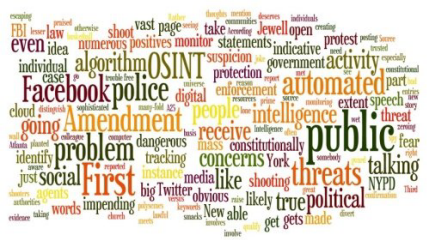In light of an election season, economic conditions, and domestic stability particularly vulnerable to disruption, we should examine a distinct possibility. Under Title 10 of the U.S. Constitution (as described in Title 18, USC Section 1385), the President has the authorization to order military forces to support civil authorities and to aid domestic security efforts. These operations are referred to as Military Assistance to Civil Disturbances.
After the Watts Riots of 1965, the U.S. Army drafted a plan for the Defense Department, codenamed Operation Garden Plot. Since then, U.S. Presidents have authorized both regular army and national guard troops to take part in Garden Plot during the 1992 LA Riots, as well as after 9/11. The Garden Plot document notes that:
During domestic civil disturbance operations, federal military forces will confront members of the civil populace participating in group acts of violence antagonistic to authority. These acts can fall anywhere along a broad spectrum of violence that encompasses individual acts of terrorism, riots, and insurrection.
Part of our jobs in using intelligence to support SHTF community security is identifying potential scenarios and describing how they could impact our security. It’s not enough to just be aware that Military Assistance to Civil Disturbances (MACDIS) is an available course of action. We need to run this scenario through the Intelligence Cycle so that we can identify early warning indicators and be able to forecast realistic expectations of the future. We can be best prepared when we can achieve early warning of what to expect.
Military Assistance to Civil Disturbances is about restoration of order. Given this broad mission, potential activities include:
- Dispersing unlawful assemblies, where we can expect less-lethal weapons, like tear gas, rubber bullets, and skirmish lines. As quickly as possible during an emergency where MACDIS could be authorized, we need to start mapping out which areas are affected by the disturbance and drawing conclusions about the use of force. Beyond that, we need to identify how the presence and escalation of force will affect our community. Will homes in the area be placed on lock down, preventing you from bugging out, or could you experience mobs or rioters being pushed from a nearby area into your community?
- Patrolling disturbed areas is another activity we’d expect during MACDIS, hence the importance of mapping out known locations where there are ongoing disruptions. We should have generated intelligence requirements by now and should begin satisfying those requirements: strength, disposition, weapons, equipment, and vehicles (to name a few) in use by the military force. The more we know about what’s out there, both in terms of troops and rioters, the more prepared we can be.
- Preventing the commission of unlawful acts is standard practice in responses to civil disturbances. Keep in mind that law enforcement and military forces may not be concerned about protecting commercial or private property. As an intelligence guy, that’s one thing I’m interested in: what are the boundaries of their operations? What’s their standard operating procedure, or what orders have they been given that define what they can or can’t do.
- Providing a quick reaction force (QRF) might be necessary where a disturbance has an element of mobility. For instance, if rioters avoid areas where troops are present, a QRF may be required to have a very quick response to a moving target. Another common use of QRF is when current forces are overwhelmed and need some support. When we battle tracked the Ferguson riots, we located where additional tactical teams were staged. Knowing that information could have been very useful if we lived in Ferguson, MO.
- Distributing essential goods and providing aid to the populace is a common practice we’ve seen, especially overseas. These aid distribution locations are places we need to have on our map, so that we can maintain an accurate security picture. These are places that might incur high traffic and increased potential for violence, so we may need to avoid these areas if we’re going to bug out.
- Maintaining essential services can include guarding critical infrastructure or otherwise ensuring that essential services help keep the peace. One of the worst ways to compound a civil disturbance is the disruption of essential services, like water and electricity, thus creating more unrest.
- Establishing traffic control points (TCPs) and cordons is a frequent practice to control the flow of traffic in an area. We saw numerous TCPs when battle tracking the Ferguson riots, and we were able to map them. Identifying and mapping these TCP locations is a must, and keep in mind that TCPs may not always be static. We employed 10-15 minute snap TCPs in Iraq to moderate effect when trying to screen locals for contraband and weapons.
Certainly the topic of martial law is more profound in this community, and unfortunately Military Assistance to Civil Disturbances is often confused with martial law. There’s a large difference. For starters, martial law has only been implemented twice in the nation’s history– once on a national level during the Civil War and again on a regional level during World War 2. Military assistance to civil disturbances has occurred numerous times.
Only the President or Congress can declare martial law, whereas federal military assistance is requested at the state level, and the Attorney General advises the President on the appropriate use of force. While military forces will participate, a Senior Civilian Representative for the Attorney General (SCRAG) remains in control of MACDIS operations, and a military representative directs the use of military force to achieve goals outlined by the SCRAG. All state and local law enforcement agencies remain under the control of state civilians. Identifying who these officials are and which military units will participate in MACDIS operations could help us determine potential courses of action for the operations. And the more we know about what is likely to happen (versus what’s unlikely to happen), the better prepared we can be.
This article originally appeared on Forward Observer










